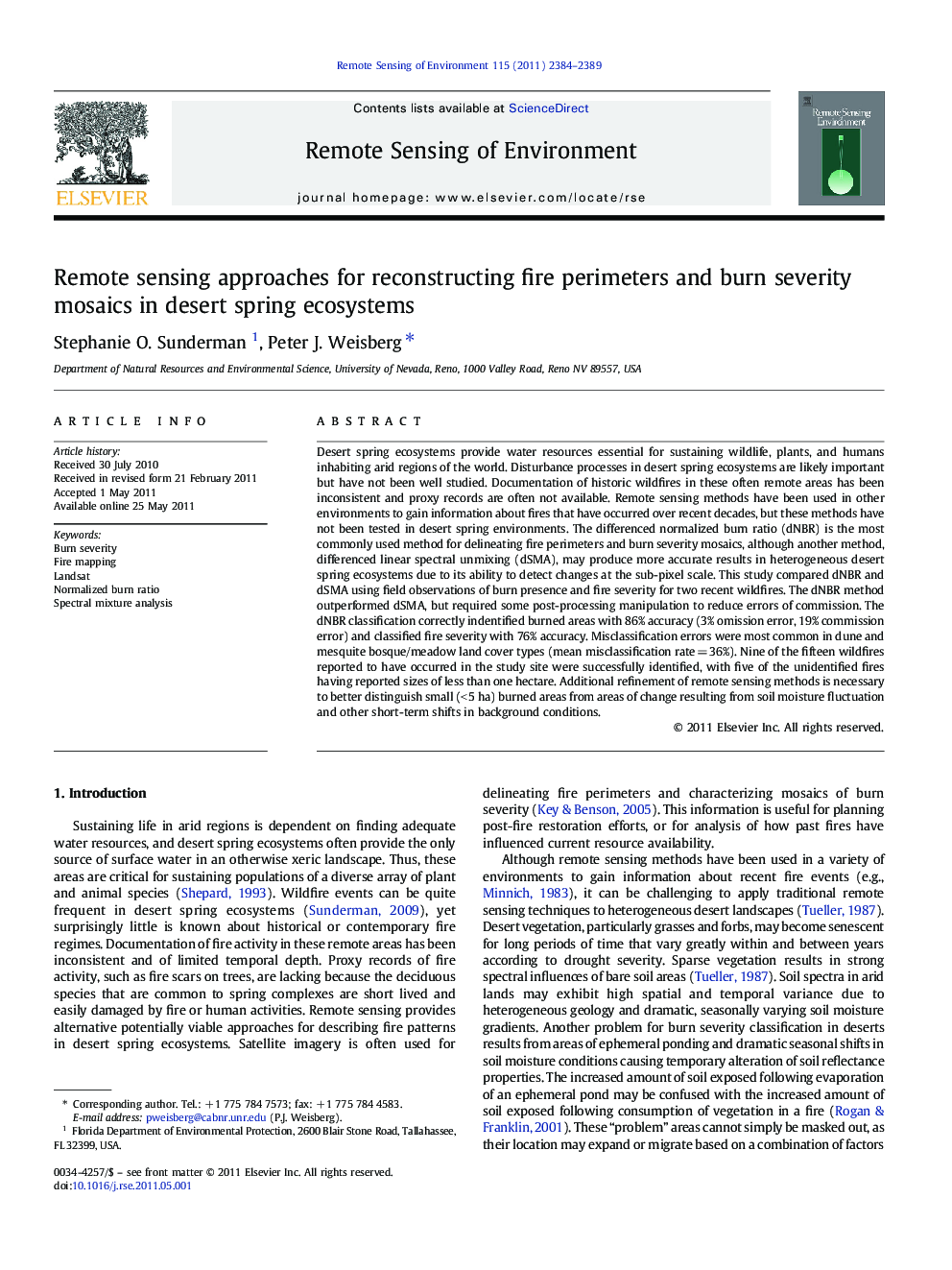| کد مقاله | کد نشریه | سال انتشار | مقاله انگلیسی | نسخه تمام متن |
|---|---|---|---|---|
| 4459444 | 1621288 | 2011 | 6 صفحه PDF | دانلود رایگان |

Desert spring ecosystems provide water resources essential for sustaining wildlife, plants, and humans inhabiting arid regions of the world. Disturbance processes in desert spring ecosystems are likely important but have not been well studied. Documentation of historic wildfires in these often remote areas has been inconsistent and proxy records are often not available. Remote sensing methods have been used in other environments to gain information about fires that have occurred over recent decades, but these methods have not been tested in desert spring environments. The differenced normalized burn ratio (dNBR) is the most commonly used method for delineating fire perimeters and burn severity mosaics, although another method, differenced linear spectral unmixing (dSMA), may produce more accurate results in heterogeneous desert spring ecosystems due to its ability to detect changes at the sub-pixel scale. This study compared dNBR and dSMA using field observations of burn presence and fire severity for two recent wildfires. The dNBR method outperformed dSMA, but required some post-processing manipulation to reduce errors of commission. The dNBR classification correctly indentified burned areas with 86% accuracy (3% omission error, 19% commission error) and classified fire severity with 76% accuracy. Misclassification errors were most common in dune and mesquite bosque/meadow land cover types (mean misclassification rate = 36%). Nine of the fifteen wildfires reported to have occurred in the study site were successfully identified, with five of the unidentified fires having reported sizes of less than one hectare. Additional refinement of remote sensing methods is necessary to better distinguish small (< 5 ha) burned areas from areas of change resulting from soil moisture fluctuation and other short-term shifts in background conditions.
Research highlights
► Remote sensing burn severity methods require testing for desert spring wetlands.
► We compared dNBR and dSMA for burn perimeter delineation.
► We evaluated dNBR for burn severity mapping.
► dNBR outperformed dSMA and was accurate for large but not for small burns (< 5 ha).
► Additional refinement is needed for mapping small fires in arid environments.
Journal: Remote Sensing of Environment - Volume 115, Issue 9, 15 September 2011, Pages 2384–2389